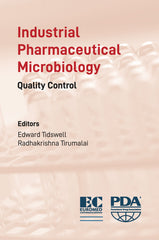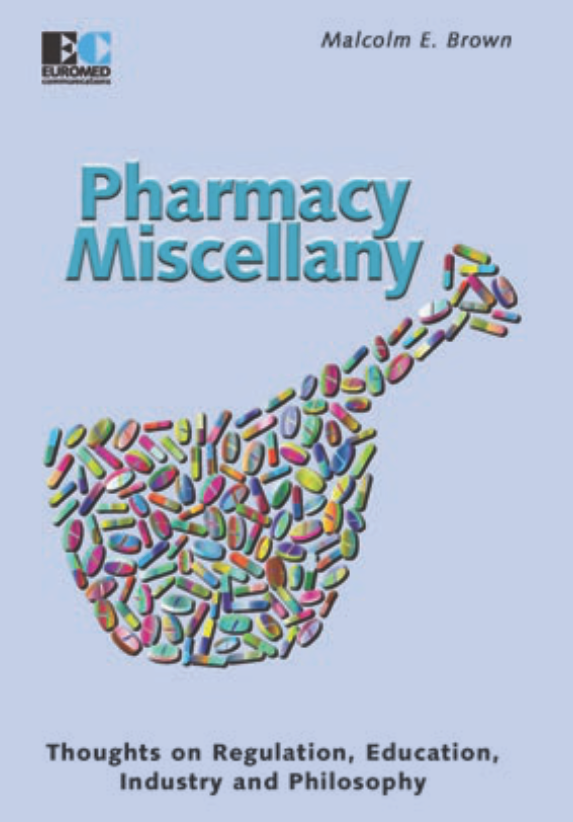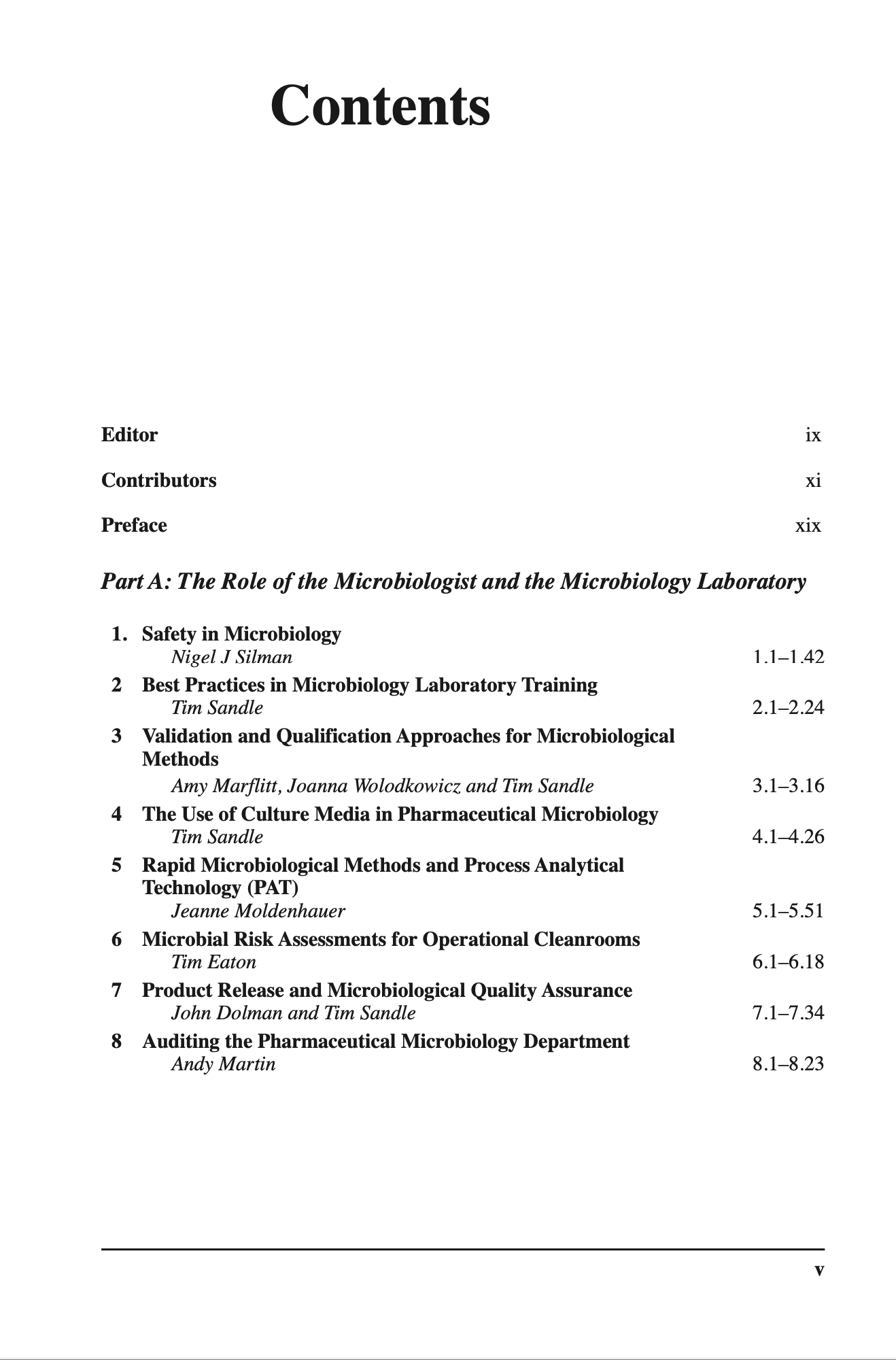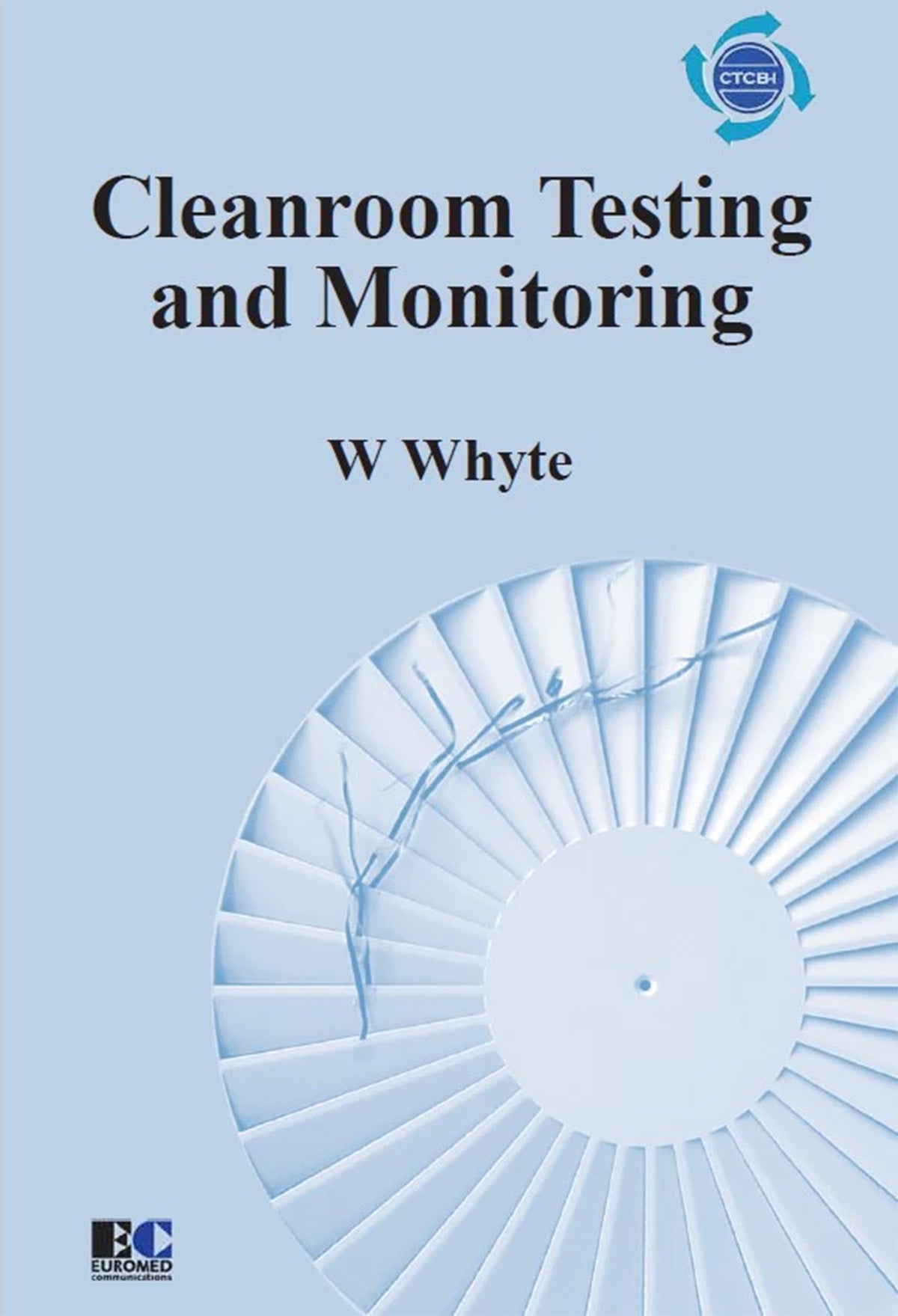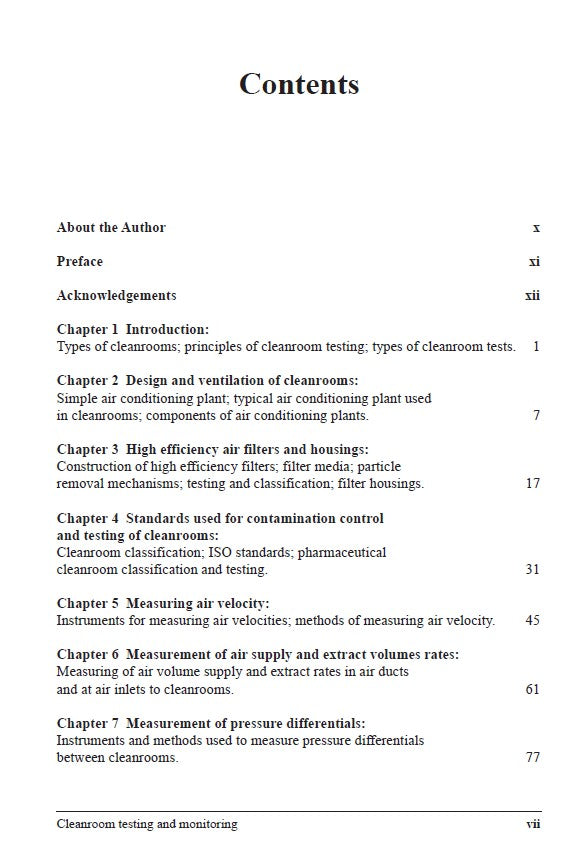Industrial Pharmaceutical Microbiology: Quality Control
The eBook is available now.
Edited by Edward Tidswell and Radhakrishna Tirumalai
ISBN 978-1-917195-00-3 eBook, 525 pages, £240
ISBN 978-1-917195-01-0 Hardback, 525 pages, £270
Industrial Pharmaceutical Microbiology: Quality Control provides an in-depth comprehensive survey of QC pharma methods in the microbiology laboratory, to enable a better understanding of these methods, and to ensure better developed, more compliant, expedited procedures.
The reference text brings together the hitherto unavailable background, fundamental science, principles, development, intended purpose, and specific answers to questions of execution and qualification of compendial and related microbiological test methods. Key topics include the types of microbiological tests, reference strains and culture collections, and equivalence of reference strain.
Test methods and subject matter include bioburden, microbial enumeration, specified and objectionable microorganisms, antimicrobial effectiveness testing, endotoxins and sterility tests, microbial identification, biological indicators, water activity, disinfectant efficacy, and water. It also covers a critical, stimulating look into the topic of Environmental Monitoring. The comprehensive content provides useful guidance on the management of laboratory practices and laboratory assessments of processes and tasks. Emphasis is placed on a correct, contemporary, and standard of terminologies and definitions which is critical in the execution of these tests and a necessary common language when exploring their principles, development, execution, and troubleshooting.
In summary, Industrial Pharmaceutical Microbiology: Quality Control with its 20 chapters, 19 international authors and over 500 pages, enables the practitioner to have a complete understanding of these microbiological methods, and to ensure better developed, compliant, appropriate procedures and accurate meaningful data.
Contents
- Introduction to Pharmaceutical Microbiological Test Methods
by Radhakrishna Tirumalai
- Terms and Definitions
by Edward Tidswell and Radhakrishna Tirumalai
- Discriminating and Enumerating Colonies
by Edward Tidswell
- General Laboratory Practices and Management
by Donald Singer
- Sterility Testing
by Edward Tidswell and Radhakrishna Tirumalai
- Microbiological Examination on Nonsterile Products – Microbial Enumeration Tests
by Radhakrishna Tirumalai
- Microbiological Examination of Nonsterile Products – Specified and Objectional Microorganisms
by Radhakrishna Tirumalai
- Testing for Burkholderia cepaciacomplex (BCC)
by David Hussong
- Bioburden Testing
by Edward Tidswell
- Antimicrobial Effectiveness Test
by David Porter and Radhakrishna Tirumalai
- Microbial Identification
by David Roesti and Hans-Joachim Anders
- Bacterial Endotoxin Testing (BET)
by Karen McCullough
- Medical Device Testing
by Sarah Bennett
- The Role of Water Activity in Microbiological Contamination
by Anthony Cundell
- Reference Strains, Stock Cultures and Passaging
by David Myatt
- Disinfection Qualifications
by Rachel Kirkham, Laura Guardi, Kim Morwood, Tim Sandle
- Laboratory Assessments
by Karen McCullough
- Environmental Monitoring
by Jim Akers and Karen McCullough
- Bulk Waters in Pharma/Biopharma
by Lucia Clontz
- Biological Indicators
by Kurt McCauley and Robert Bradley
Book review
"This new book provides a wealth of information on pharmaceutical microbiology. The individual chapters are written by a majority, if not all, individuals who have served on USP committees or expert panels.
One of the unique things about this book is that it provides a strong foundation for how the various compendial tests were developed, when they became incorporated into USP, and how they have changed over time. This historical perspective has not been easy to find in the past, without going through each year’s version of USP.
Additionally, it provides the rationale for the various parameters and features of the compendial test methods. This information can be invaluable in trying to resolve difficulties in the test method and/or the conduct of investigations relative to the test method.
This book is a must have for microbiologists and quality control personnel with responsibility over the microbiology laboratories."
Jeanne Moldenhauer, Consultant and Author


